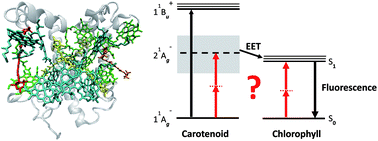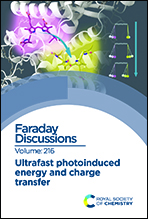Two-photon excitation spectroscopy of photosynthetic light-harvesting complexes and pigments
Abstract
In addition to (bacterio)chlorophylls, (B)Chls, light-harvesting complexes (LHCs) bind carotenoids, and/or their oxygen derivatives, xanthophylls. Xanthophylls/carotenoids have pivotal functions in LHCs: in stabilization of the structure, as accessory light-harvesting pigments and, probably most importantly, in photoprotection. Xanthophylls are assumed to be involved in the not yet fully understood mechanism of energy-dependent (qE) non-photochemical quenching of Chl fluorescence (NPQ) in higher plants and algae. The so called “xanthophyll cycle” appears to be crucial in this regard. The molecular mechanism(s) of xanthophyll involvement in qE/NPQ have not been established, yet. Moreover, excitation energy transfer (EET) processes involving carotenoids are also difficult to study, due to the fact that transitions between the ground state (S0, 11Ag−) and the lowest excited singlet state (S1, 21Ag−) of carotenoids are optically one-photon forbidden (“dark”). Two-photon excitation spectroscopic techniques have been used for more than two decades to study one-photon forbidden states of carotenoids. In the current study, two-photon excitation profiles of LHCII samples containing different xanthophyll complements were measured in the presumed 11Ag− → 21Ag− (S0 → S1) transition spectral region of the xanthophylls, as well as for isolated chlorophylls a and b in solution. The results indicate that direct two-photon excitation of Chls in this spectral region is dominant over that by xanthophylls. Implications of the results for proposed mechanism(s) of qE/NPQ will be discussed.

- This article is part of the themed collection: Ultrafast photoinduced energy and charge transfer


 Please wait while we load your content...
Please wait while we load your content...